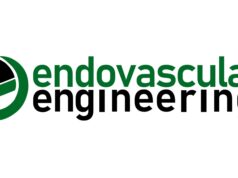The Gloucester group also highlight the benefit of a protocol-driven approach to the management of venous ulcers.The Gloucester group (Gohel MS, Barwell JR, Taylor M, Chant T, Earnshaw JJ, Heather BP, Mitchell DC, Whyman MR, Poskitt KR) presented the 3-year findings from the ESCHAR study at the annual Vascular Society of Great Britain & Ireland meeting held in Harrogate last November. Early results from the ESCHAR venous ulcer trial demonstrated that ulcer recurrence may be prevented in some legs following superficial venous surgery. The 3-year findings were reported.
Three-year healing rates were 89% and 93% for legs in the compression alone and compression plus surgery groups respectively (p=0.73, Log rank test). Three-year ulcer recurrence rates were 50% for legs randomised to compression alone and 23% for the compression plus surgery group (p<0.01). Three-year recurrence rates for legs undergoing compression alone or additional surgery were 51% and 21% (p<0.01), 52% and 24% (p=0.04), 46% and 32% (p=0.33) for legs with isolated superficial, superficial with segmental deep and superficial with total deep reflux respectively. Legs in the surgery group experienced a greater proportion of ulcer-free time after 3 years compared to legs randomised to compression alone (78% vs 71% respectively, p=0.007 Mann Whitney U test). The study concluded that surgical correction of superficial venous reflux reduces venous ulcer recurrence at 3 years and results in a greater proportion of ulcer-free time. The study also noted that this benefit is present for legs with isolated superficial and superficial with segmental deep reflux. The trial involved 500 legs with CEAP grades C5 and C6 and superficial venous reflux which were randomized to compression alone or compression plus saphenous surgery and followed-up in specialist leg-ulcer clinics. Legs were stratified using duplex into groups with isolated superficial venous reflux, superficial with segmental deep reflux and superficial with total deep reflux. Statistical analyses were on intention to treat using Kaplan-Meier survival curves. The same Gloucester group also presented a prospective assessment of an ulcer management protocol for mixed arterial/venous leg ulcers at the Vascular Society. The aim of their study was to assess healing following protocol driven treatment for patients with mixed arterial/venous ulceration. There study was started because the optimal management of patients with mixed arterial/venous leg ulcers remains unclear. The study concluded that good healing rates for mixed arterial/venous leg ulceration can be achieved using a protocol that includes supervised modified compression and selective revascularisation.Results showed ulcer healing rates between 53% and 87% depending on the extent of the arterial disease and a 6.5% 30-day mortality for those patients that underwent revascularization. Of 2011 consecutive limbs, 1416 (70%) had duplex evidence of venous reflux. Of these, 193/1416 (13.6%) had moderate arterial disease and 31/1416 (2.2%) had severe arterial compromise. Ulcer healing rates at 36 weeks were 87%, 68% and 53% for legs with insignificant, moderate and severe arterial disease respectively (p<0.001, Log rank test). Revascularisation procedures were performed in 17/193 legs with moderate and 15/31 legs with severe arterial disease. Ulcer healing 36 weeks after revascularisation was seen in 4/17 legs with moderate disease and 7/15 legs with severe arterial disease (p=0.27, Fisher's Exact test). Combined 30-day mortality for revascularisation was 6.5%. The study looked at patients referred to a specialist nurse-led leg ulcer service between 1998 and 2003, with duplex ultrasound evidence of venous reflux included. Ankle brachial pressure indices were measured and legs without significant arterial disease (ABPI >0.85) were treated with multilayer compression bandaging. Legs with moderate arterial compromise (0.5> ABPI =0.85) were initially managed with supervised modified compression, with consideration of revascularisation in legs failing to respond. Those with severe arterial disease (ABPI =0.5) were considered for immediate revascularisation.
Patients were assessed in leg ulcer and surgical clinics. Healing rates were determined using life table analysis.












